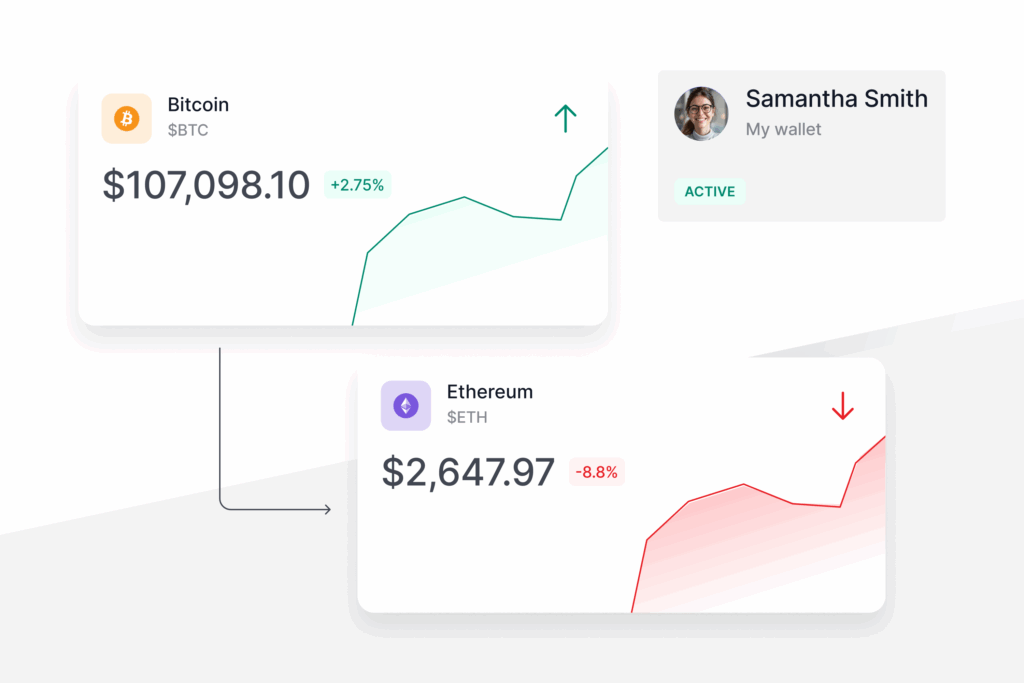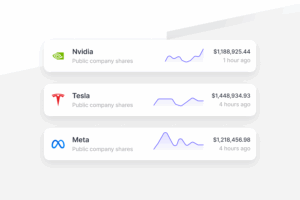
FEATURED ARTICLE
Tax Planning for Realized Gains and Ordinary Income
Tax planning strategies for realized gains and ordinary income

Tax planning strategies for realized gains and ordinary income



If you’re here, you probably know the basics of investing: A diversified portfolio of public company stock is best for most people; get started early; and stick to your process — you should leave your money in the markets for the long term. And yet understanding more detailed investment strategy can often feel like decoding the most complex of puzzles. Today we’re here to explain one of those more advanced topics: direct indexing, a strategy that’s gaining traction among savvy investors and their advisors.
Before we dive into advanced strategy, though, we’ll first explore the most well-trodden path in retain investing, and an approach that is the direct ancestor of direct indexing: index funds.
To understand direct-index investing, you’ll need to understand simple index investing. To understand index investing, you’ll need to start from first principles. So: What is a market index? A market index is a hypothetical portfolio of investment holdings that represents a segment of the financial market. Maybe the most famous index, the Dow Jones, is a listing of 30 blue-chip stocks selected to represent the broader American economy. Other well known indexes, like the S&P 500, are built to capture an even broader view of the market. Still others are more specific; the Russell 2000, for example, includes the 2000 smallest stocks traded in U.S. public markets. In all cases, though, the concept of an index is simple: It’s just a list of stocks meant to track the performance of some part of the economy.
With that definition in mind, the point of index investing becomes clear. An index fund is a collection of stocks — typically organized as a mutual fund or exchange-traded fund (ETF) — that seeks to track the performance of an index. By investing in an index fund, you are buying a tiny piece of all of the companies represented in that index.
The benefits of index investing are clear. It’s simple — you have to buy into only one fund representing dozens, hundreds, or even thousands of individual companies, reducing the mental load and fees associated with active investing — but you still reap the benefits of diversification and exposure to a larger portion of the market. As the broader public has become wise to the benefits of index investing, these funds have gone from a niche product to a significant piece of most people’s investment plans to, in some cases, the entire plan in and of themselves.
Index investing is great, and it should be the starting point for most retail investors. With direct indexing, however, you can do even better. With direct indexing, instead of buying a single index fund, the investor purchases individual securities that replicate the same particular index. Direct indexing, in other words, is just another approach to indexing. With an index fund, you own a single asset that replicates the performance of a whole index; with direct indexing, you own all of the individual assets in the index, with weighting that replicates the index.
We can hear the question from a mile away: Why would you choose direct indexing over index funds? It just sounds like a more complicated and expensive way to get the same result. The answer, as with many of the topics we cover in this space, comes down to two things: Investment performance and taxes.
Tailored Portfolio: With direct indexing, you have the liberty to personalize your investment portfolio to align with your values, goals, and risk tolerance versus a standardized portfolio. You could put together a portfolio that mimics the performance of the top 20 tech stocks, or one that includes all of the largest companies in Brazil, or one that includes everything in the Nasdaq Composite Index (the most-tracked technology index in the U.S.), minus Apple. With direct indexing, you have complete control and, if you do it well, you can outperform more traditional index funds.
Tax Optimization: Direct indexing also offers more opportunities for tax-loss harvesting, a strategy that involves selling securities that have incurred a loss to offset taxes on your winners. (This works because capital gains taxes are calculated on your net earnings, so if you have $100 of losses to offset $100 of gains, the IRS will treat you as having $0 net taxable income.)
Let’s say the S&P 500 is up 15% this year, and you’d like to take some of those gains off the table. With an index fund, you’d have to sell fund shares to reap your returns, and you’d owe capital gain taxes on the proceeds. Hidden inside that 15% gain, though, there will be many individual stocks that are down. This is where direct indexing can shine. If you’ve invested in the individual stocks in the index directly, you can sell some of the winners to create the liquidity you need while also specifically selling the assets that are down, reaping capital losses to offset your gains.
Minimums and Fees: Direct indexing can be akin to shopping at a high-end boutique — because it’s more customizable and labor intensive, it often requires a higher minimum investment and more fees compared to the convenient experience of index funds.
Complex Management: Managing a direct index portfolio can be more complex; it requires more active attention and frequent action to take advantage of the benefits it offers.
Now that we’ve weighed the pros and cons of direct indexing, how does it stack up against index funds?
Flexibility vs. Simplicity: While direct indexing offers a tailor-made approach, index funds shine in their simplicity and ease of management. It’s a case of customization versus simplicity, and which is right for you depends on your goals and how much your willing to invest in terms of time and money.
Tax Benefits vs. Low Entry Point: Direct indexing could be a winner in the tax optimization race. However, index funds offer a lower entry point, making them accessible to investors with limited capital.
It’s important to note that both direct indexing and index funds have their unique selling points. The best choice depends on individual preferences, financial goals, and the level of involvement one wishes to have in managing their portfolio.
Direct indexing offers a personalized approach with potential tax benefits, ideal for those with a hefty investment purse and a penchant for customization. On the other hand, index funds provide a simple, hassle-free investment avenue, perfect for beginners and those with a hands-off approach to investing.
We’ve built a platform that makes advanced tax planning – once reserved for ultra-high-net-worth individuals – accessible to everyone. With Valur, you can reduce your taxes by six figures or more, at less than half the cost of traditional providers.
From selecting the right strategy to handling setup, administration, and ongoing optimization, we take care of the hard work so you don’t have to. The results speak for themselves: our customers have generated over $3 billion in additional wealth through our platform.
Want to see what Valur can do for you or your clients? Explore our Learning Center, use our online calculators to estimate your potential savings or schedule a time to chat with us today!